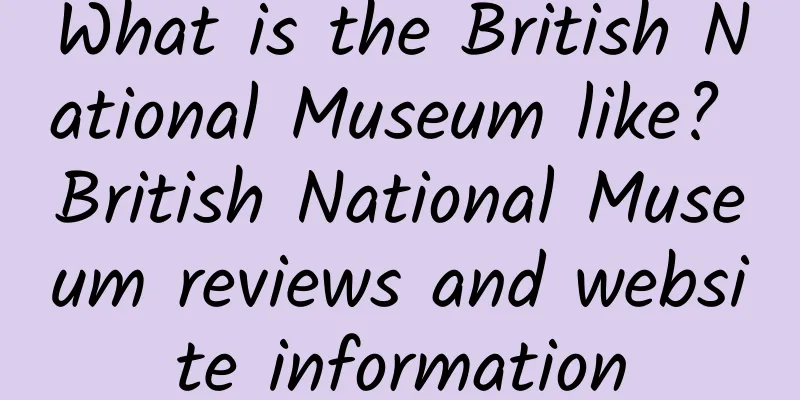British National Museum: Guardian of World Cultural Heritage
The British National Museum, commonly known as the British Museum, is located in London, England. It is one of the oldest and largest museums in the world. It is ranked as one of the world's three largest museums along with the Metropolitan Museum of Art in the United States and the Louvre in France. The British Museum was founded in 1753 and officially opened to the public on January 15, 1759. It has a history of more than 260 years.
Historical background of the British Museum
The British Museum was founded on the will of Sir Hans Sloane, a famous natural historian and collector. After his death, his vast collection was donated to the nation and became the foundation of the British Museum. Over time, the museum's collections continued to expand and eventually developed into the size we know today.
Origin of the Collection
The collection of the British Museum mainly comes from the looting of Britain in wars from the 18th to the 19th century, especially during the Napoleonic Wars. These spoils mainly come from countries such as Greece, Egypt and China. For example, the famous Elgin Marbles were removed from the Parthenon in Athens, Greece and transported to the UK.
Main exhibitions and collections
The British Museum's exhibitions cover art and historical artifacts from prehistoric times to modern times. Among them, the Egyptian Museum is one of the most popular exhibition areas in the museum, displaying many precious artifacts including the Rosetta Stone. In addition, the Asian Museum, Greek and Roman Museum, etc. are also must-see exhibition areas for tourists.
Egyptian Museum
The Egyptian Museum houses one of the most important collections of ancient Egyptian artifacts in the world, including mummies, pharaoh statues and various ancient Egyptian artworks. The Rosetta Stone is the treasure of the museum, which is the key to deciphering ancient Egyptian hieroglyphics.
Greek and Roman Pavilion
The Greek and Roman Museum displays a large number of ancient Greek and Roman artworks and architectural fragments. The Elgin Marbles are the star exhibits here, although their existence has also sparked widespread controversy over the return of cultural relics.
Asia Pavilion
The Asian Pavilion exhibits artworks and historical relics from Asian countries such as China, India, and Japan. Among them, Chinese ceramics, calligraphy and painting, and bronze ware are particularly eye-catching.
Museum architecture and design
The British Museum is a work of art in itself. The main building was designed by the famous architect Robert Smirke in neoclassical style. The museum's Great Court is the largest covered square in Europe, designed by Norman Foster and opened in 2000.
Education and research
The British Museum is not only an exhibition venue, but also an important education and research center. The museum provides a wealth of educational resources, including lectures, seminars and online courses, aimed at enhancing public awareness and understanding of the world's cultural heritage.
Visiting Information
The British Museum is located in the center of London, with convenient transportation, open all year round and free admission. Visitors can get the latest exhibition information and visitor guides through the museum's official website (britishmuseum.org).
Conclusion
As the guardian of the world's cultural heritage, the British Museum not only displays the richness and diversity of human history, but also promotes the exchange and understanding of global cultures. Whether you are a scholar interested in history or an ordinary tourist, you can find your own cultural journey here.










